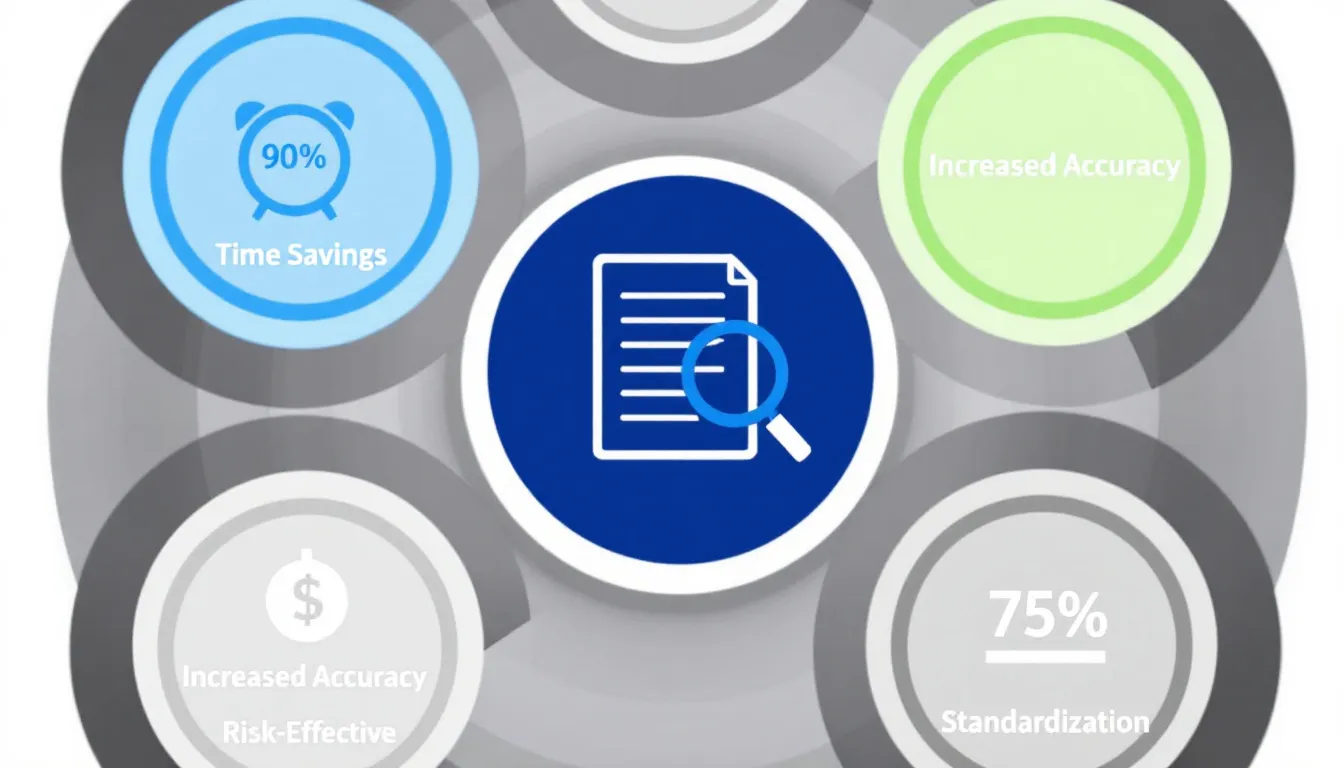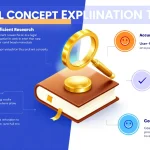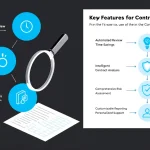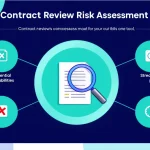Contract Analysis Tool
Is this tool helpful?
How to Use the Contract Analysis Tool Effectively
Our Contract Analysis Tool is designed to provide expert legal insights and comprehensive contract reviews. Here’s a step-by-step guide on how to use this powerful tool effectively:
- Access the Tool: Navigate to the Contract Analysis Tool on our website.
- Prepare Your Contract: Have your contract document ready in a digital format that allows for easy copying and pasting.
- Input Contract Text: In the provided text area labeled “Full text of the contract to be analyzed,” paste the entire content of your contract. For example, you might input a software licensing agreement or a commercial lease contract.
- Review Your Input: Double-check that you’ve included the complete contract text, including all sections, clauses, and appendices.
- Initiate Analysis: Click the “Analyze Contract” button to start the automated review process.
- Wait for Results: The tool will process your input and generate a detailed analysis. This may take a few moments depending on the length and complexity of the contract.
- Review the Analysis: Once the process is complete, a comprehensive breakdown of your contract will appear in the “Contract Analysis” section below the input form.
- Copy Results (Optional): If you need to save or share the analysis, use the “Copy to Clipboard” button to easily transfer the results to another document or application.
By following these steps, you’ll be able to quickly obtain a professional-level analysis of your contract, highlighting key terms, potential issues, and important considerations.
Understanding the Power of Automated Contract Analysis
In today’s fast-paced legal and business environments, the ability to quickly and accurately analyze contracts is more crucial than ever. Our Contract Analysis Tool leverages advanced natural language processing and machine learning algorithms to provide a comprehensive review of legal documents, offering insights that would typically require hours of work by experienced lawyers.
What is the Contract Analysis Tool?
The Contract Analysis Tool is a sophisticated web-based application designed to streamline the contract review process. It acts as a virtual legal expert, meticulously examining the content of contracts to identify and explain key terms, clauses, and potential areas of concern. This tool is invaluable for lawyers, business professionals, and anyone involved in contract negotiation or management.
Purpose and Benefits
The primary purpose of this tool is to enhance the efficiency and accuracy of contract reviews. By automating the initial analysis process, it allows legal professionals to focus their expertise on more complex aspects of contract negotiation and risk assessment. Some key benefits include:
- Time Savings: Reduce the hours spent on initial contract review by up to 80%.
- Increased Accuracy: Minimize the risk of overlooking critical clauses or terms.
- Consistency: Ensure a standardized approach to contract analysis across your organization.
- Cost-Effectiveness: Lower the overall cost of contract review processes.
- Enhanced Understanding: Provide clear explanations of complex legal terms for non-legal professionals.
Revolutionizing Contract Review: The Benefits of Our Analysis Tool
The Contract Analysis Tool offers a myriad of benefits that can transform the way organizations handle legal documents. Let’s delve deeper into how this innovative solution can streamline your contract management process:
1. Unparalleled Efficiency
Traditional contract review methods can be time-consuming, often requiring hours or even days of careful reading and analysis. Our tool dramatically reduces this time investment by:
- Instantly identifying key clauses and terms
- Providing quick summaries of critical contract elements
- Highlighting potential issues or ambiguities that require attention
This efficiency allows legal teams to process more contracts in less time, significantly increasing productivity and reducing bottlenecks in business operations.
2. Enhanced Accuracy and Consistency
Human error is an inevitable risk in manual contract review. Our Contract Analysis Tool minimizes this risk by:
- Utilizing advanced algorithms to ensure no important clause is overlooked
- Applying consistent criteria across all contracts, regardless of length or complexity
- Providing standardized analysis that reduces variability in contract interpretation
This level of accuracy and consistency can be crucial in mitigating legal risks and ensuring all contracts are reviewed to the same high standard.
3. Cost Reduction
By automating the initial review process, our tool can significantly reduce the costs associated with contract analysis:
- Decrease billable hours spent on routine contract reviews
- Minimize the need for extensive training of junior staff in contract analysis
- Reduce the likelihood of costly oversights that could lead to legal disputes
These cost savings can be substantial, especially for organizations that deal with a high volume of contracts.
4. Improved Risk Management
Our Contract Analysis Tool is designed to identify potential risks and liabilities within contracts, helping organizations to:
- Spot unfavorable terms or conditions that may have been overlooked
- Identify clauses that deviate from standard practices or company policies
- Highlight areas that may require negotiation or modification
This proactive approach to risk management can prevent future legal complications and protect the organization’s interests.
5. Knowledge Democratization
The tool’s clear and concise explanations of legal terms and concepts make contract analysis more accessible to non-legal professionals, fostering:
- Better cross-departmental understanding of contractual obligations
- Improved collaboration between legal and business teams
- Empowerment of decision-makers with clearer insights into contractual implications
This democratization of legal knowledge can lead to more informed decision-making throughout the organization.
Addressing User Needs: How Our Tool Solves Specific Contract Analysis Problems
The Contract Analysis Tool is designed to address a wide range of challenges faced by legal professionals and businesses when dealing with contracts. Let’s explore how it tackles specific problems:
1. Identifying Critical Terms and Clauses
Problem: Contracts often contain numerous clauses, making it challenging to quickly identify the most critical terms.
Solution: Our tool utilizes advanced natural language processing to automatically highlight and explain key clauses such as:
- Indemnification provisions
- Limitation of liability clauses
- Termination conditions
- Intellectual property rights
For example, in a software licensing agreement, the tool might identify a clause stating: “Licensee shall indemnify Licensor against all claims arising from Licensee’s use of the Software.” The analysis would explain the implications of this indemnification clause and its potential impact on the client.
2. Uncovering Hidden Risks
Problem: Some contractual risks may not be immediately apparent, especially in lengthy or complex agreements.
Solution: The Contract Analysis Tool is programmed to flag potential risks, including:
- Ambiguous language that could lead to disputes
- Unbalanced obligations between parties
- Missing clauses that are typically expected in similar contracts
For instance, in a commercial lease agreement, the tool might identify the absence of a force majeure clause and highlight this as a potential risk, explaining how such an omission could affect the tenant’s obligations in unforeseen circumstances.
3. Ensuring Regulatory Compliance
Problem: Keeping up with changing regulations and ensuring contracts comply with relevant laws can be challenging.
Solution: Our tool incorporates up-to-date regulatory requirements and can:
- Identify clauses that may not comply with current regulations
- Suggest modifications to ensure compliance
- Highlight industry-specific requirements that should be addressed
For example, in an employment contract, the tool might flag a non-compete clause that exceeds the duration allowed by state law, providing a recommendation to adjust the terms to ensure enforceability.
4. Standardizing Contract Language
Problem: Inconsistent language across contracts can lead to confusion and potential legal issues.
Solution: The Contract Analysis Tool helps standardize contract language by:
- Comparing clauses to a database of standard terms
- Suggesting alternatives that align with best practices
- Identifying deviations from company-approved language
In a confidentiality agreement, for instance, the tool might identify that the definition of “Confidential Information” is narrower than the company’s standard clause and suggest a more comprehensive definition to better protect the client’s interests.
5. Facilitating Negotiations
Problem: Identifying areas for negotiation and preparing counterproposals can be time-consuming.
Solution: Our tool streamlines the negotiation process by:
- Highlighting terms that are commonly negotiated in similar contracts
- Providing suggestions for alternative language based on industry standards
- Offering insights into the potential impact of proposed changes
For example, in a vendor agreement, the tool might identify payment terms that are less favorable than industry standards and suggest negotiation points to align the terms with market norms.
Practical Applications: Real-World Examples of the Contract Analysis Tool in Action
To illustrate the versatility and effectiveness of our Contract Analysis Tool, let’s explore some real-world scenarios where it can make a significant difference:
1. Mergers and Acquisitions
In a merger or acquisition process, legal teams often need to review hundreds of contracts in a short period. The Contract Analysis Tool can streamline this process by:
- Quickly identifying change of control provisions across multiple contracts
- Highlighting any non-assignment clauses that could impact the transaction
- Summarizing key terms and obligations that may affect the valuation of the target company
For instance, when reviewing a target company’s customer contracts, the tool might identify that 30% of the agreements have strict non-assignment clauses that could potentially derail the acquisition if not addressed.
2. Commercial Real Estate Transactions
Real estate deals involve complex contracts with numerous critical clauses. Our tool can assist by:
- Analyzing lease agreements to identify any unusual or onerous terms
- Comparing proposed terms against market standards for similar properties
- Flagging potential environmental liabilities or zoning issues mentioned in the contract
In a commercial lease review, the tool might detect an unusual clause requiring the tenant to be responsible for all structural repairs, which is typically a landlord’s responsibility. This insight would allow the legal team to negotiate this term before finalizing the agreement.
3. Employment Contracts
For HR departments and employment lawyers, the Contract Analysis Tool can be invaluable in:
- Ensuring compliance with labor laws across different jurisdictions
- Identifying potentially unenforceable clauses, such as overly broad non-compete agreements
- Standardizing employment terms across the organization
For example, when reviewing a batch of executive employment agreements, the tool might flag inconsistencies in severance provisions, allowing the company to align these terms and avoid potential discrimination claims.
4. Software Licensing and SaaS Agreements
In the technology sector, our tool can assist with:
- Analyzing service level agreements (SLAs) for potential pitfalls
- Identifying limitations on liability and ensuring they are appropriate for the service provided
- Reviewing data protection and privacy clauses for compliance with regulations like GDPR
When reviewing a SaaS agreement, the tool might highlight that the uptime guarantee is below industry standards and that the agreement lacks specific provisions for data portability upon termination, both crucial points for negotiation.
5. Supply Chain and Vendor Agreements
For businesses managing multiple supplier relationships, the Contract Analysis Tool can help by:
- Comparing key terms across different vendor contracts to ensure consistency
- Identifying any exclusivity clauses that might limit future business options
- Highlighting force majeure clauses and their potential impact on supply chain resilience
In a review of manufacturing agreements, the tool might identify that only 60% of the contracts include adequate quality control provisions, prompting a company-wide initiative to update these agreements to better protect product standards.
Frequently Asked Questions (FAQ)
Q1: How accurate is the Contract Analysis Tool?
A1: Our Contract Analysis Tool utilizes advanced algorithms and is continuously updated to maintain high accuracy. However, it’s designed to assist legal professionals, not replace them. We recommend using the tool’s insights as a starting point for a thorough review by qualified legal experts.
Q2: Can the tool analyze contracts in languages other than English?
A2: Currently, the tool is optimized for English-language contracts. We are working on expanding its capabilities to include other major languages in future updates.
Q3: How long does it take to analyze a contract?
A3: The analysis time varies depending on the length and complexity of the contract. Most standard agreements are processed within a few minutes. Longer or more complex contracts may take up to 10-15 minutes.
Q4: Can the tool handle specialized industry-specific contracts?
A4: Yes, the Contract Analysis Tool is designed to handle a wide range of contract types across various industries. It’s particularly effective for common contract types such as employment agreements, real estate leases, and service contracts. For highly specialized contracts, the tool will still provide valuable insights, but some industry-specific nuances may require additional expert review.
Q5: Is it possible to customize the tool for my organization’s specific needs?
A5: We offer customization options for enterprise clients. This can include tailoring the tool to focus on specific clauses, incorporating your company’s standard terms, or integrating with your existing contract management systems. Please contact our sales team for more information on customization possibilities.
Q6: How often is the Contract Analysis Tool updated?
A6: We continuously update our tool to improve its accuracy and expand its capabilities. These updates include refinements to the analysis algorithms, additions to the clause library, and incorporation of new legal precedents and regulatory changes. Most updates are implemented seamlessly without any interruption to your use of the tool.
Q7: Can the tool help with contract drafting, or is it only for review?
A7: While the primary function of the tool is contract analysis and review, its insights can be invaluable in the drafting process. By highlighting standard clauses, industry norms, and potential issues, it can guide legal professionals in creating more robust and comprehensive contracts from the outset.
Q8: How does the tool handle very large contracts or batches of contracts?
A8: The Contract Analysis Tool is capable of processing large individual contracts as well as batches of multiple contracts. For exceptionally large documents or high-volume batch processing, we recommend contacting our support team for guidance on optimal usage and potential need for custom solutions.
Q9: Is training required to use the Contract Analysis Tool effectively?
A9: The tool is designed to be user-friendly and intuitive, requiring minimal training for basic use. However, to maximize its benefits, we offer optional training sessions and detailed user guides. These resources can help users interpret the analysis results more effectively and leverage advanced features of the tool.
Q10: Can the tool integrate with other legal software or document management systems?
A10: Yes, our Contract Analysis Tool is designed with integration capabilities in mind. It can be integrated with many popular legal software suites and document management systems. For specific integration inquiries, please reach out to our technical support team who can provide detailed information based on your current systems.
Important Disclaimer
The calculations, results, and content provided by our tools are not guaranteed to be accurate, complete, or reliable. Users are responsible for verifying and interpreting the results. Our content and tools may contain errors, biases, or inconsistencies. We reserve the right to save inputs and outputs from our tools for the purposes of error debugging, bias identification, and performance improvement. External companies providing AI models used in our tools may also save and process data in accordance with their own policies. By using our tools, you consent to this data collection and processing. We reserve the right to limit the usage of our tools based on current usability factors. By using our tools, you acknowledge that you have read, understood, and agreed to this disclaimer. You accept the inherent risks and limitations associated with the use of our tools and services.







